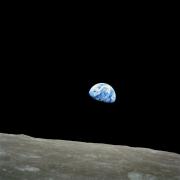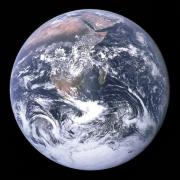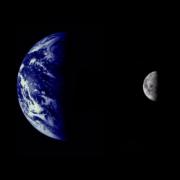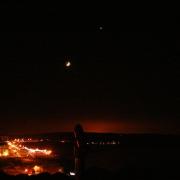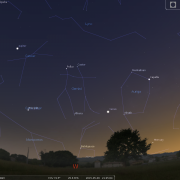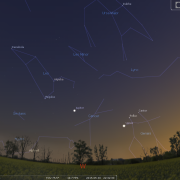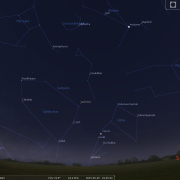Welcome to the WDAS monthly newsletter for May 2015: a digest of the month's latest contributions to our website. Below you'll find Society News, Sky Notes and In-Focus articles printed in full. There's also future events, and trailers for other articles which appear in full on the website - just a click away!
On the website you'll also be able to comment on articles, and if you'd like to play an editorial role in creating new content, just let us know!
Quick Summary for May:
- The final WDAS monthly meeting before summer recess is Tuesday May 5th.
- First Star Party of the Summer Season on Saturday 23rd May... please help!
Society News
 After the society meeting in May, the next formal meeting is not until early autumn, but weather permitting we hope to see some of you at the scheduled public Star Party events over the early summer months. WDAS members who regularly support star parties will know how rewarding these can be. All that is required is a fine evening, a curious public (and some are believe you me very curious) and the scopes. Members also find it a great way to interact and share their interest in astronomy with others.
After the society meeting in May, the next formal meeting is not until early autumn, but weather permitting we hope to see some of you at the scheduled public Star Party events over the early summer months. WDAS members who regularly support star parties will know how rewarding these can be. All that is required is a fine evening, a curious public (and some are believe you me very curious) and the scopes. Members also find it a great way to interact and share their interest in astronomy with others.
Assistance is always welcome - actually it's becoming a necessity, even it's just to lend a hand in setting up equipment and keeping a watchful eye on things. So if you can make it along, please do join us. If you are not sure as to whether an event is on due to weather conditions, please ring Mark beforehand to verify matters.
There surely cannot have been that many occasions in which Paul has made the journey up to Whitby in such fine conditions, more akin to summer than spring. It was a pleasure not having to battle wind, rain, snow... plague of locusts, etc which often seems to coincide with Paul’s appearance at the Museum.
A fine evening then, and a great turn out for Paul’s presentation - 40 in fact were seated in the Normanby room, which I know Paul really appreciated, as do we, and it was nice to see so many members. Although a departure from ‘Images of the Universe’ series, Paul’s talk still followed the ‘images’ format, but instead of looking out to the universe at large, the Earth-Moon system was itself the focus of attention, with ‘Images of the Earth’.

First photo of earth+moon.
Taken from Mars by "Curiosity"
Rover on 31-Jan-2014
Click for full-size image
Paul’s personal choice of 10 key or iconic images, depicting the earth- moon system from various locations within our solar system, each accompanied by an explanation and augmented with further sub-images. The images ranged from ‘The Pale Blue Dot’; Earth shine; Marble Earth, Goodbye Earth, Hello Earth, Earth at Night, Earth from the Red planet and various Earth-Moon compositions. Paul’s enthusiasm for his subject matter, whatever topic, is infectious, and the time seemed to fly by.
The home-made refreshments were as ever delicious, hardly a morsel left, with Paul putting his doggy bag (as instructed ) to good use for his journey home. We say it every year, but Paul’s talks are ‘infotainment’ of the highest calibre, thoroughly enjoyed by all.
Many thanks to Pam for the food, Rosemary, for organising the Museum room etc, Rosy (who had made the journey over from Kirbymoorside especially to see Paul) and who ably assisted in the kitchen along with my good lady wife, who was locked in the ‘cupboard kitchen’ and not allowed out until all the washing up had been done!
To cap the evening off in fine style, on venturing outside, a quite spectacular conjunction of the crescent moon (in earth shine) Venus and Aldebaran, greeted us, quite superb. Not surprising then, that many a camera phone was produced, and if you can send in any results (either to Mark or via the web site) that would be great.
Sky Notes
In this month's Sky Notes:
Planetary Skylights
Looking West: Jupiter, Venus
and Mercury on 06-May at
21:45h (twilight)
(Click image for full-size view)
 Venus, the brilliant evening star, dominates the evening western twilight sky, moving up through the winter constellation of Taurus as the bull slips down toward the western horizon. Over the course of the month Venus passes between the two open star clusters in Taurus, the Pleiades or seven sisters on the 11th and the Hyades from the 13-16th. Aldeberan, the fiery eye of the bull, will lie to the left of Venus. Telescopically Venus is best observed in bright twilight, reducing the glare of the planet somewhat. You should then be able to detect the gibbous phase of the planet. The young crescent moon is nearby on the 21st.
Venus, the brilliant evening star, dominates the evening western twilight sky, moving up through the winter constellation of Taurus as the bull slips down toward the western horizon. Over the course of the month Venus passes between the two open star clusters in Taurus, the Pleiades or seven sisters on the 11th and the Hyades from the 13-16th. Aldeberan, the fiery eye of the bull, will lie to the left of Venus. Telescopically Venus is best observed in bright twilight, reducing the glare of the planet somewhat. You should then be able to detect the gibbous phase of the planet. The young crescent moon is nearby on the 21st.
 For the first three weeks of May Mercury continues its spring evening apparition low in the WNW sky. Look for it 45 minutes after sunset a ‘fist’ height above the horizon, lower right of Venus. Use binoculars if you cannot initially spot it with just the naked eye. The moon passes in the vicinity on the 19th, although Mercury will be more difficult to spot by then.
For the first three weeks of May Mercury continues its spring evening apparition low in the WNW sky. Look for it 45 minutes after sunset a ‘fist’ height above the horizon, lower right of Venus. Use binoculars if you cannot initially spot it with just the naked eye. The moon passes in the vicinity on the 19th, although Mercury will be more difficult to spot by then.
 Jupiter is well placed quite high in the SW aspect of the sky, but is gradually slipping down westwards towards the horizon. As it does so, Venus draws ever closer. The pair will have a spectacular conjunction later in June. The moon lies nearby on the 24th.
Jupiter is well placed quite high in the SW aspect of the sky, but is gradually slipping down westwards towards the horizon. As it does so, Venus draws ever closer. The pair will have a spectacular conjunction later in June. The moon lies nearby on the 24th.
 Finally, and certainly not least, Saturn comes to opposition on May 23rd, residing due south at midnight. Before then you will be able to view the ‘ringed wonder’ from 10pm across in the east, a steady bright ‘pearly star’ residing above the ruddy hue of Antares, chief star in Scorpius. Through a scope the ring system appears wide open and is a magnificent sight. Look for Titan, Saturn’s largest moon as a speck of light nearby. Our moon lies nearby on the 6th.
Finally, and certainly not least, Saturn comes to opposition on May 23rd, residing due south at midnight. Before then you will be able to view the ‘ringed wonder’ from 10pm across in the east, a steady bright ‘pearly star’ residing above the ruddy hue of Antares, chief star in Scorpius. Through a scope the ring system appears wide open and is a magnificent sight. Look for Titan, Saturn’s largest moon as a speck of light nearby. Our moon lies nearby on the 6th.
Meteor Activity

The Eta Aquarid meteor shower peaks in the early morning hours on the 6th, as Aquarius is rising. This is one of two meteor showers associated with debris particles deposited over time by comet Halley, the other shower being the Orionids, which peak in late October.
Although the Eta Aquarids have a ZHR (zenith hourly rate) approaching 30, Aquarius is only just rising in the SE shortly before dawn and actual observed rates will be less than half of this at best. A waning gibbous moon will also restrict numbers.
February 2015 Sky Charts
Click each image to see a full-size Sky Chart:
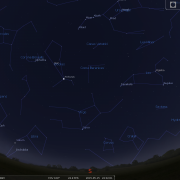 |
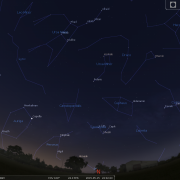 |
| Looking South Mid May - 22:30h |
Looking North |
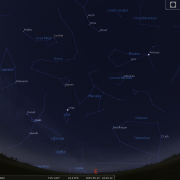 |
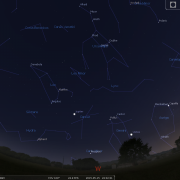 |
| Looking East Mid May - 22:30h |
Looking West Mid May - 22:30h |
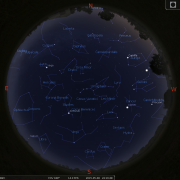 |
|
| Overview Mid May - 21:15h |
Image Credits:
- Planets and Comets where not otherwise mentioned: NASA
- Sky Charts: Stellarium Software
In-Focus
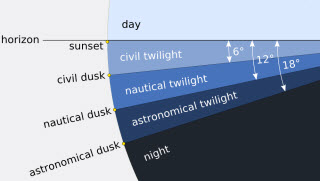 As nights become ever lighter, now may be a good opportunity to briefly explain why the changes in light levels encountered daily after sunset or before sunrise occur. If you were to step outside in autumn, winter or early spring, skies are fully darkened by around 21:00h. This deepest level of darkness, known as Astronomical twilight, is just one of three levels experienced, the others being Civil and Nautical twilight respectively. However, because of our location (latitude) on the surface of the globe, as Earth orbits around the Sun, the duration of twilight levels varies considerably. So let me explain a little further using evening twilight as an example.
As nights become ever lighter, now may be a good opportunity to briefly explain why the changes in light levels encountered daily after sunset or before sunrise occur. If you were to step outside in autumn, winter or early spring, skies are fully darkened by around 21:00h. This deepest level of darkness, known as Astronomical twilight, is just one of three levels experienced, the others being Civil and Nautical twilight respectively. However, because of our location (latitude) on the surface of the globe, as Earth orbits around the Sun, the duration of twilight levels varies considerably. So let me explain a little further using evening twilight as an example.
Immediately after sunset Civil twilight exists until the Sun is approximately 6 degrees below the horizon. At this point normal daytime activities that require light cease to be possible and 'lighting up' time occurs. If skies are really clear look out for an interesting phenomena half an hour or so after sunset, opposite the position of sunset. In this direction a hazy, dark-ish purple band just above the ESE horizon gradually 'heaps up' before being engulfed by deepening twilight. This is not mist but the shadow of Earth itself, being cast back into space!
As the Earth spins a little further round and the Sun's elevation below the horizon reaches approximately 12 degrees, the marine horizon is no longer apparent and Nautical twilight exists. In the heavens only the brighter navigational stars are visible. Finally, when the Sun drops approximately 18 degrees below the horizon (a hands span) Astronomical twilight commences and the remaining fainter stars become visible, unless light pollution drowns them out. With the approach of dawn the same lighting levels are experienced - only in reverse.
As we move toward summer the northern hemisphere is inclined towards the Sun and twilight duration's alter significantly. From the latitude of Whitby astronomical twilight is totally absent for 82 nights; from late May until mid August. The Suns journey beneath the horizon is so shallow it never actually reaches 18 degrees. Matters become worse (for the astronomer) around the summer solstice when even nautical twilight levels barely exist here, the Sun setting by a mere dozen degrees. At least from northern England summer astronomy is just about possible, but as you travel further north nocturnal conditions grow ever lighter and only 13 degrees north of Whitby at latitude 67 degrees N (the Arctic Circle) twilight on any level is completely absent for part of summer and the Sun is visible above the horizon 24 hours a day. Only solar observers are completely happy for in the land of "midnight sun" star gazing is limited to just one, that is if it's not cloudy!

